Score breakdown
Things we like
- A much better luxury SUV than the Levante
- Interior space and comfort
- Sporty handling without the stiff ride
- Practical boot
Not so much
- Expensive compared with German rivals
- Four-cylinder lacks character
- Some ergonomics off the mark
- Unlikely to hold value as well as a Macan
Just as the Maserati brand had been seemingly headed for an extended period of fresh-metal dormancy, a whirlwind of product activity is sweeping through Modena.
After recently playing a couple of halo cards with the related MC20 supercar and Cielo open-seater, the trident badge is now dealing itself into the volume territory of luxury cars.
The Grecale, the latest Maserati to be named after a wind, is the company’s first midsized SUV.
It’s taken seven years since the Maserati Levante arrived as a rival to the Porsche Cayenne, and now the Grecale must hit the ground running against another Porsche SUV – and one that already has nearly a decade of success under its belt: the Macan.

Maserati isn’t relying on either undercutting or price parity, though. A three-model range starts with the GT at $109,500 where the Macan kicks off at $95,300.
The mid-pack Modena we’re testing costs from $128,000, and the flagship, V6-powered Trofeo sits at $165K before on-roads, where a six-cylinder Macan is available from $119,000.
Add between a reasonable $2150 and an eyebrow-raising $50,500 if you want any other colour besides Bianco white.
The GT and Modena share a mild-hybrid 2.0-litre four-cylinder, which serves up an extra 23kW for 243kW (but an identical 450Nm) and a three-tenths shaving off the 0-100km/h claim, at 5.3 seconds.

Other extras on the mechanical front include a limited-slip differential and electronically adjustable dampers, while the Grecale’s boots step up from size 19s to 20s.
They prop up a body shape that has hints of Macan at the front – especially the headlight shapes – and can easily be confused with the Levante at first glance. It could perhaps be more distinctive beyond the famous forks and tri fender vents, though the proportions are good.
The interior – accessed by cleverly conceived touch-sensitive doorhandles – makes an immediate and lasting positive impression. From the stitched leather seating to the open-pore wood rim and velvety sun-visors, the Maserati literally presents a feel-good factor.
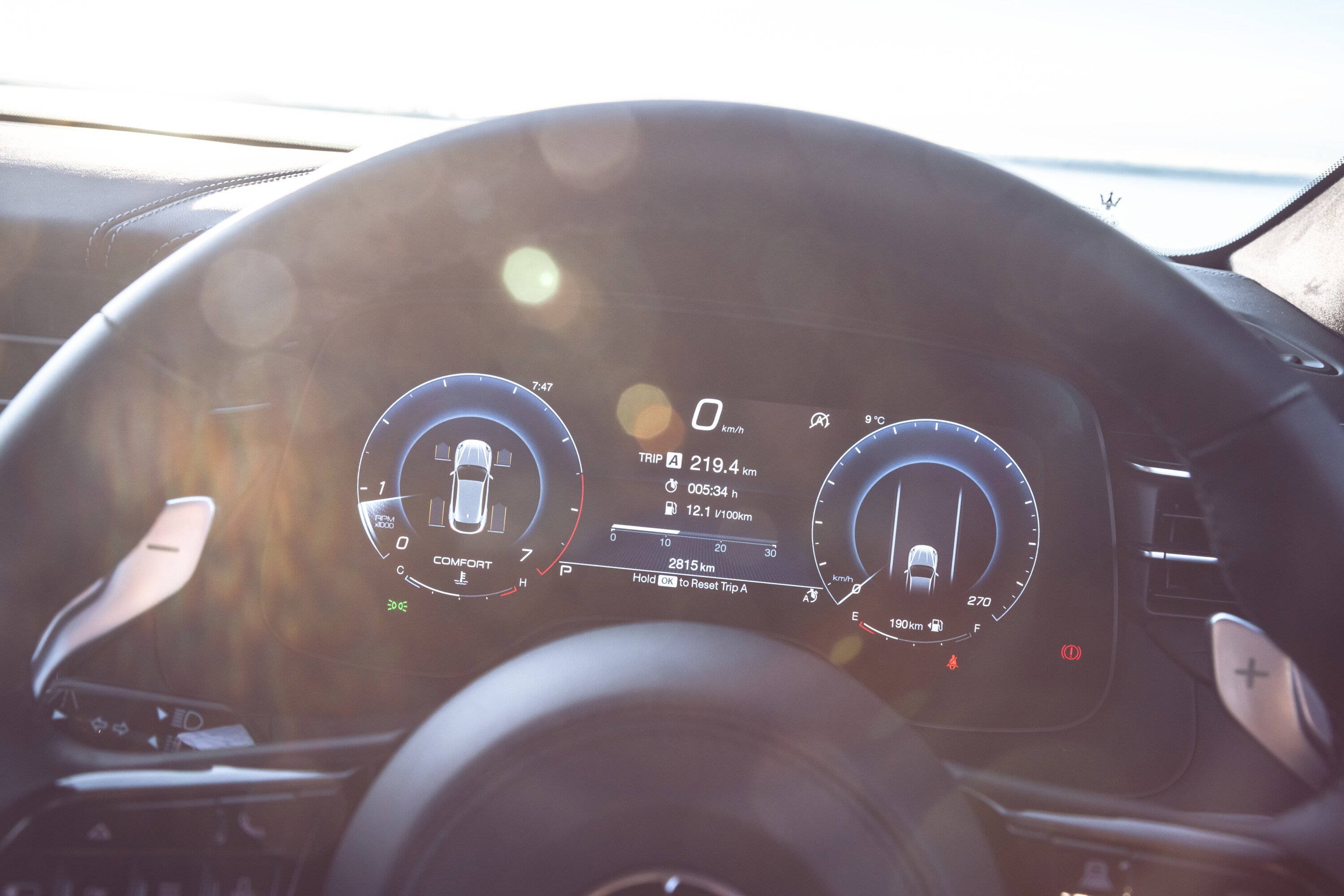
Carbonfibre trim and stitched Trident headrest badges, included on our test car, are among a myriad of optional cabin embellishments.
There are contemporary touches such as the dash clock that eschews the traditional analogue face for a digital version with customisable faces, and additional compass and G-force options.
The single-framed dual central display looks like you’ve just opened an oversized Samsung Galaxy Z Fold.
In the upper section, it houses a 12.3-inch Ultra HD screen serving up an all-new Android-based user interface complete with smartphone mirroring, Amazon’s Alexa voice assistant, and control of a great-sounding, 14-speaker Sonus Faber audio. Below that is a sloped, 8.8-inch panel combining various vehicle functions and heating/ventilation controls, with PRND buttons in between.

The steering wheel closely mimics the tiller in the MC20, including two large circular buttons – Engine Start/Stop and Drive Modes in the Grecale’s case – that hang from the horizontal spokes.
The smaller buttons just represent a general level of switchgear tactility that’s not quite a match for the Macan’s, while there are some ergonomic nit-picks.
Finding some controls is harder, or at least more distracting, than necessary, such as the headlight buttons that are found only in the lower central digital display. Non-selected transmission buttons lack illumination, making for a game of Guess the Gear at night (when the rear-view camera quality is also found to be disappointing).
And for a minor acoustic annoyance, the indicators sound more like what you’d expect from a Suzuki Swift.
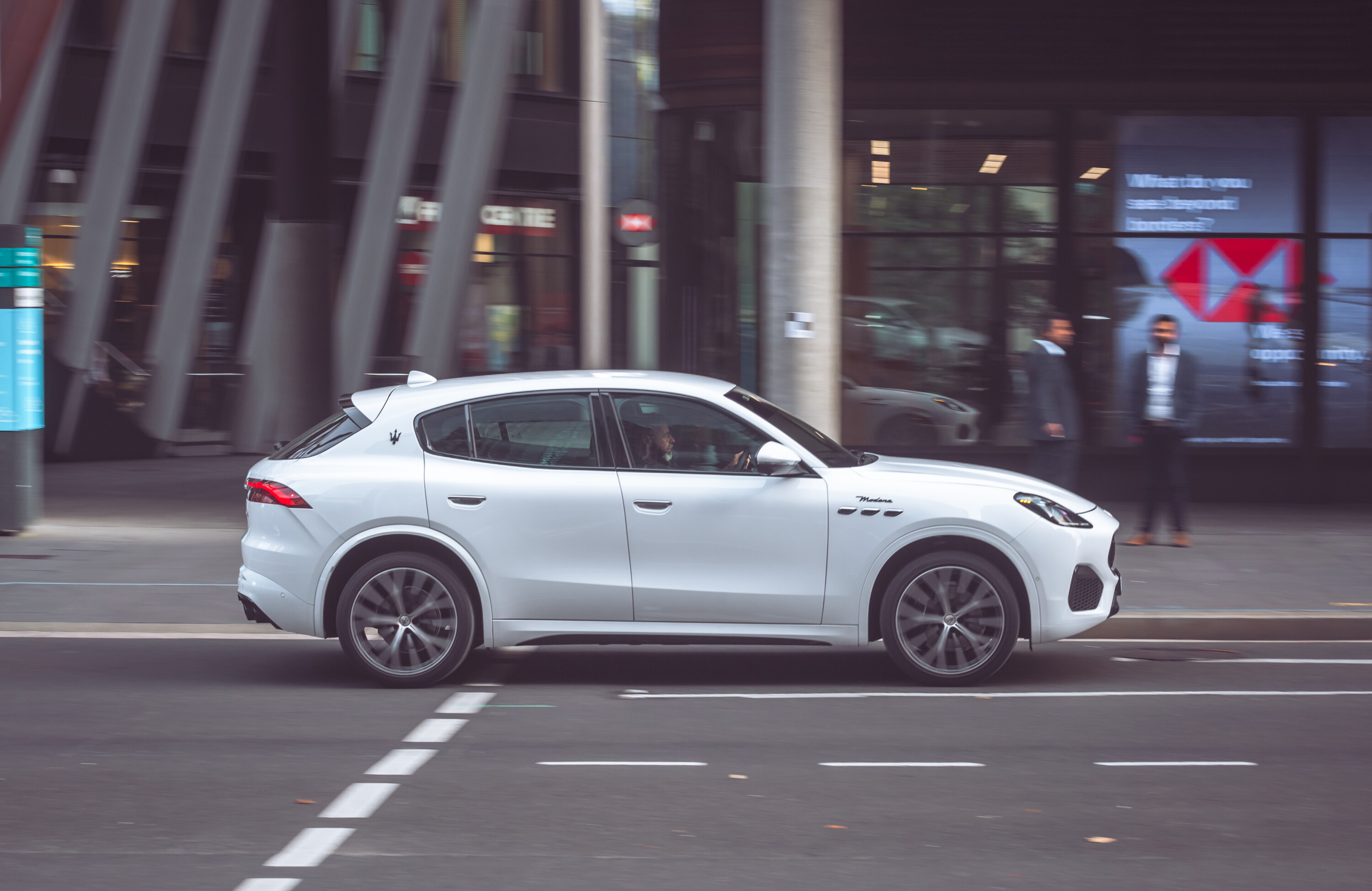
… though 535 litres is still nearly 50L more than you find in a Macan’s luggage area.
The rear doors are a tale of two halves – poorly disguised cheap plastics lower down, lovely ribbed leather and carbonfibre layered trim for the upper section – though the rear cabin otherwise has few faults.
A wheelbase longer than the Cayenne’s brings Macan-beating legroom, with knee space further aided by deeply scalloped seatbacks. Foot space and headroom are also plentiful, while passengers relax into inviting outboard bench seats that also offer some lateral support.
Climate control with a rear touchscreen is one of the upgrades from the GT; heated rear seats, rear privacy glass and a panoramic sunroof are all options.
Boot space is reduced by 35 litres in the GT and Modena models, owing to the mild-hybrid system’s 48v battery, though 535 litres is still nearly 50L more than you find in a Macan’s luggage area.
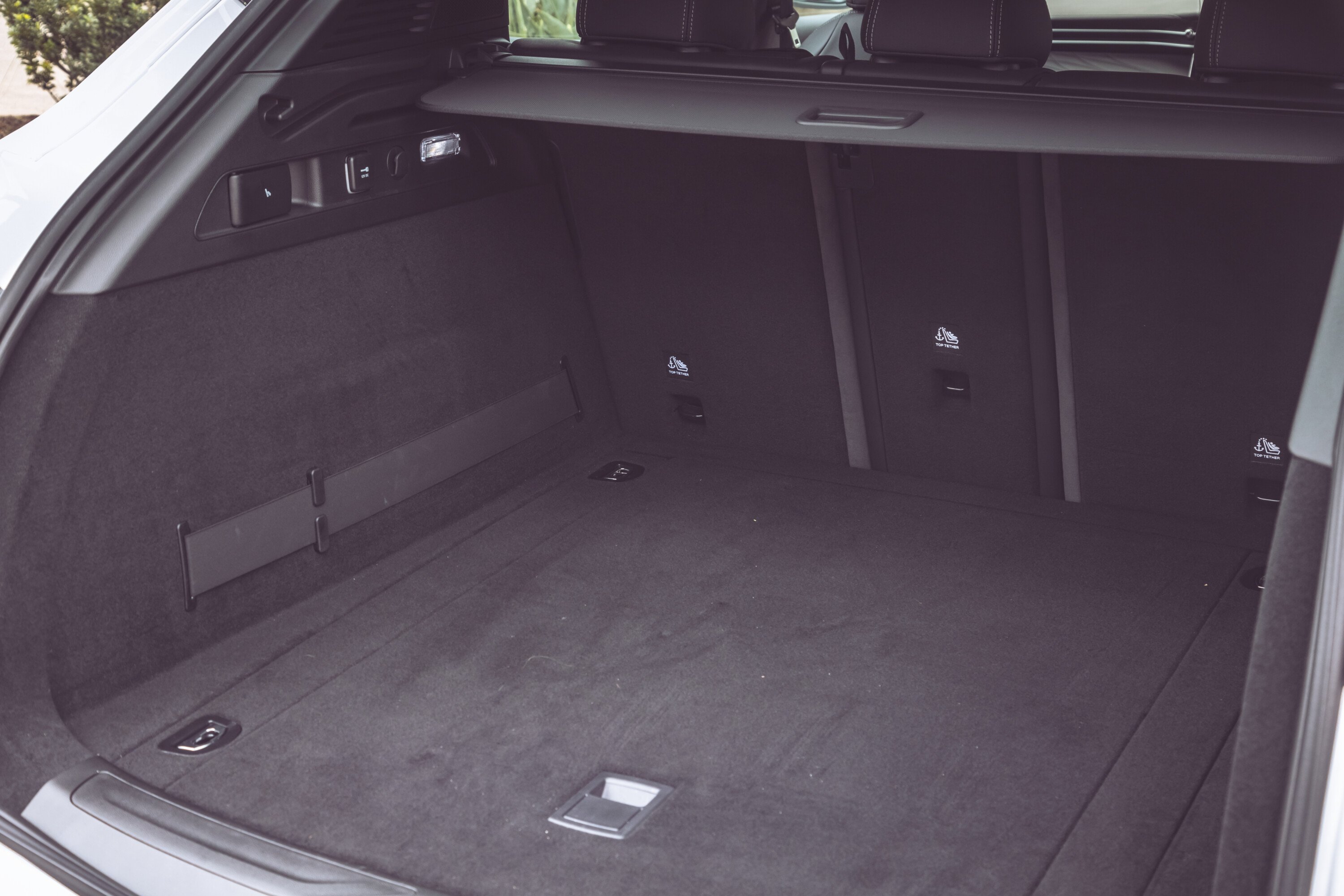
Release levers fold the 60/40 seatbacks almost flat, or a pull-strap can lower a middle section to create a load-through. A cargo blind, hooks, elastic strap, two lights, and a 12-volt socket extend the practicality.
A modified version of the Giorgio platform that has worked well for Alfa Romeo’s Giulia sedan and Stelvio SUV sits beneath the Grecale, and this on-paper promise isn’t broken on the road.
Even with optional 21-inch wheels, the Modena doesn’t need the optional air springs to ride with a fluidity that was always conspicuously missing from the Levante’s restless suspension. The Grecale floats across scarred surfaces with minimum fuss, the bigger wheels only tripping over lateral road repairs.
Maserati is on record saying it deliberately wanted to avoid the ride stiffness of German competitors – which extend beyond the Macan to high-end versions of the BMW X3 and Mercedes GLC – and it’s succeeded.
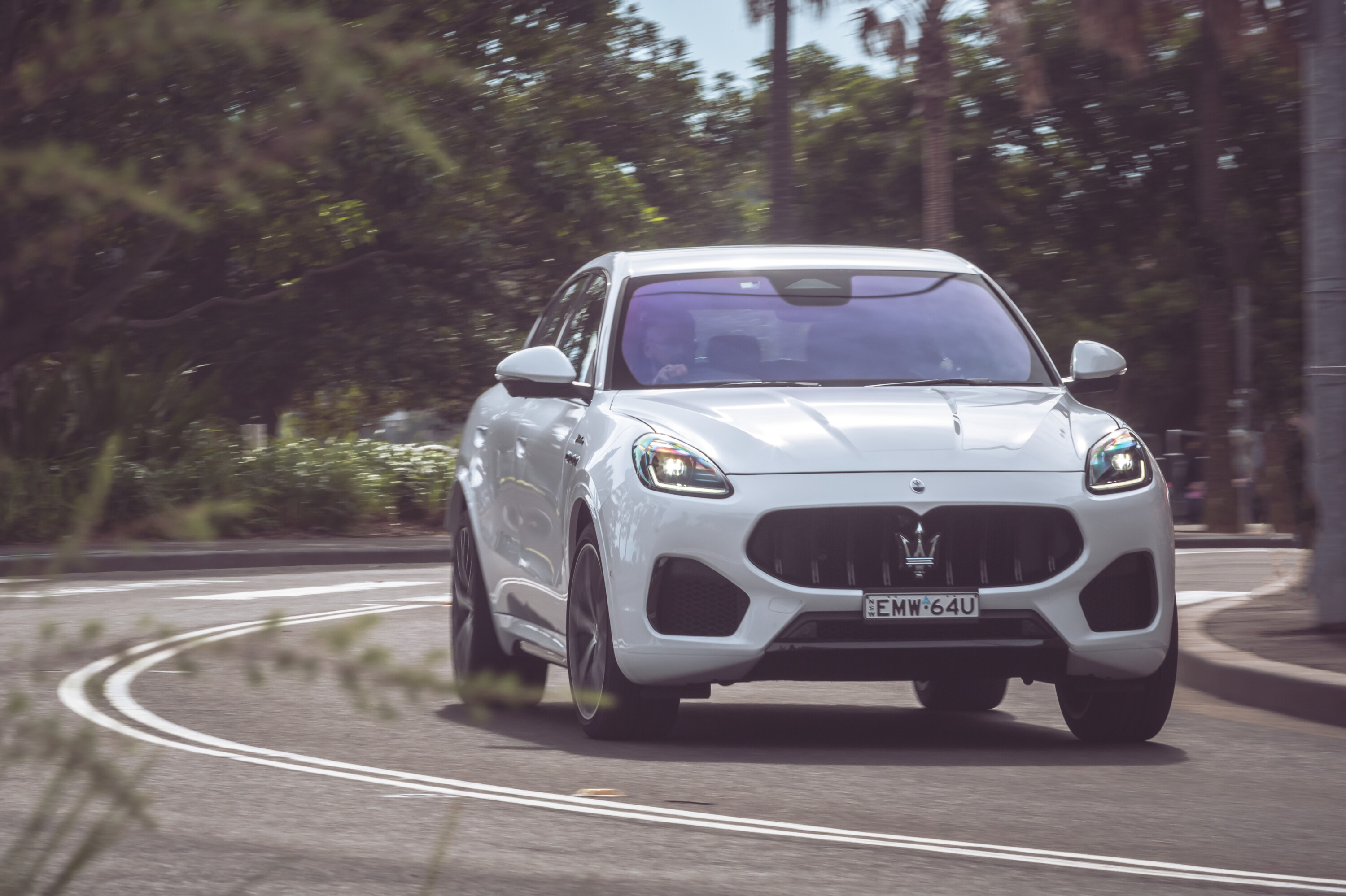
Insulation from wind and tyre noise is also impressive.
A capable chassis is at its best on country roads when the damping force is increased by rotating the steering wheel’s Drive Mode dial through the mid-level GT to Sport – or pressing the dedicated damper button within. This helps reduce vertical movements and body roll.
The steering remains lighter than ideal, though it’s accurate, and quick to point the Maserati into a bend. Pirelli P Zero tyres that are 295mm wide at the rear bring additional surefootedness, along with a limited-slip diff and an all-wheel-drive system that can apportion up to 100 per cent torque to the back wheels.
The brake pedal feels better when used to slow the Grecale from higher speeds; around town its lack of progressiveness makes it difficult to bring the Maserati to a stop smoothly.
A four-cylinder engine, even one with some electric assistance, seems slightly incongruous in a vehicle that costs $128,000 before on-road charges and desirable options.
BMW, Mercedes and Porsche rivals offer turbocharged six-cylinders for similar or less money.
Outputs of 243kW and 450Nm are respectable, at least, as is the Grecale Modena’s general pace. The torque is unchanged from the GT but stretches another grand on the tacho, from 2000-5000rpm.
A gravelly engine note and a slightly artificial-sounding exhaust are guaranteed to disappoint any former Maserati owners ready to reminisce about sonorous V8s or growling twin-turbo V6s, as is the 5750rpm redline that all too quickly brings the rev-fun to an end when using the paddle levers to manually manage the gearchanges.

The electric compressor helps deliver good response at low revs, though, and the engine becomes increasingly enthusiast as you step up through the driving modes.
What the mild-hybrid system doesn’t seemingly do is improve efficiency. We registered an average of 11.5 litres per 100km even with a healthy percentage of freeway cruising during our drive. That’s above the Modena’s official consumption of 8.6L/100km.
The Grecale for those seeking super-SUV performance is the Trofeo, which uses a detuned, 390kW/620Nm version of the MC20 supercar’s ‘Nettuno’ twin-turbo V6 to power to 100km/h in 3.8 seconds.
Next year, an electric Folgore variant arrives as the company’s first fully electric SUV and part of Maserati’s plan to be all-electric by 2030. Featuring a 105kWh battery and 400V platform, the Grecale Folgore will offer about 800Nm.
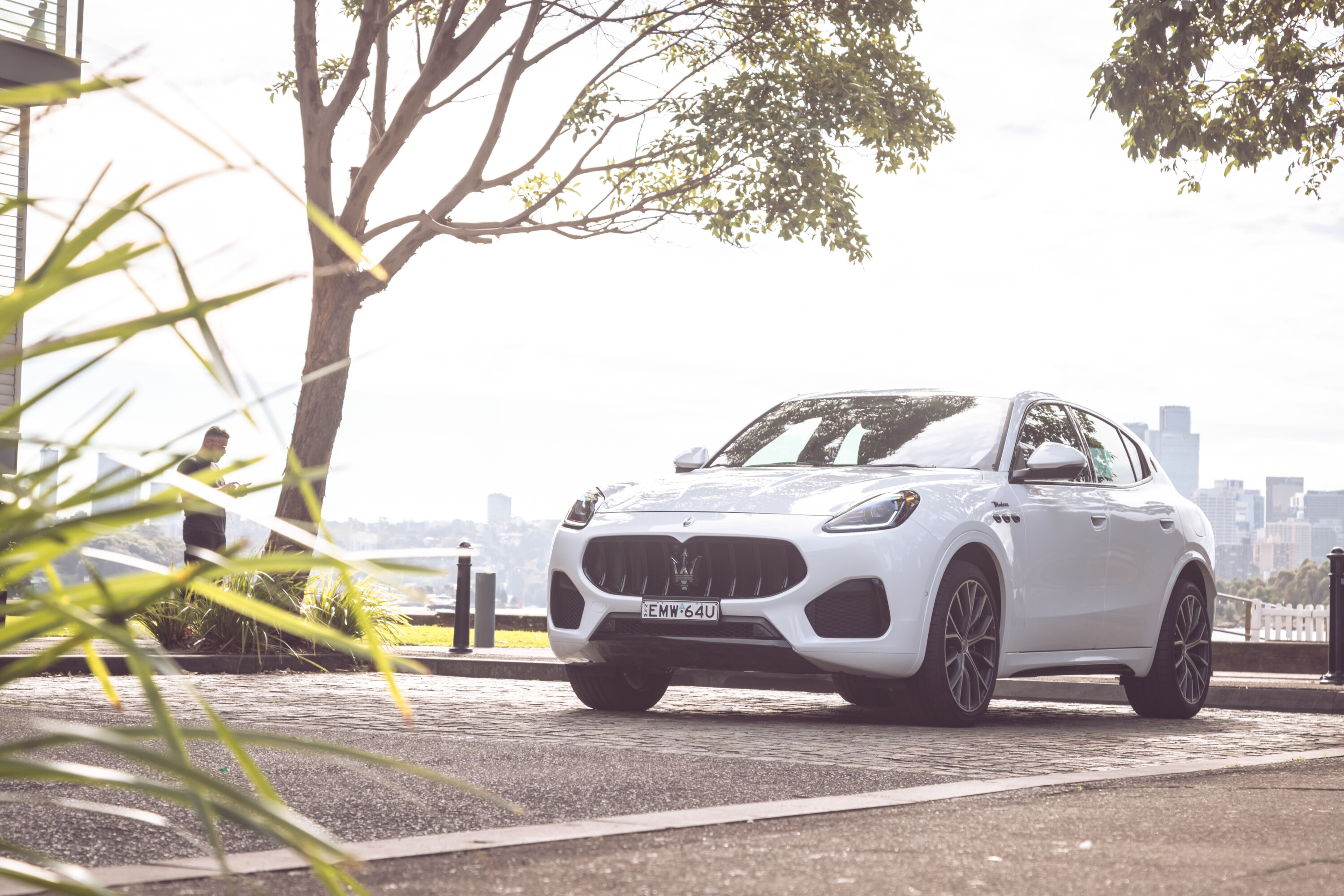
Maserati Australia says the Grecale will account for about two-thirds of the Italian brand’s local sales.
A huge percentage, though not necessarily surprising when the Grecale makes the Levante look almost redundant – offering nearly as much interior space yet better in every other way, for less money.
Whether the SUV named after a strong, cool Mediterranean wind can blow over its major Porsche rival is another question entirely.
Score breakdown
Things we like
- A much better luxury SUV than the Levante
- Interior space and comfort
- Sporty handling without the stiff ride
- Practical boot
Not so much
- Expensive compared with German rivals
- Four-cylinder lacks character
- Some ergonomics off the mark
- Unlikely to hold value as well as a Macan
We recommend
-
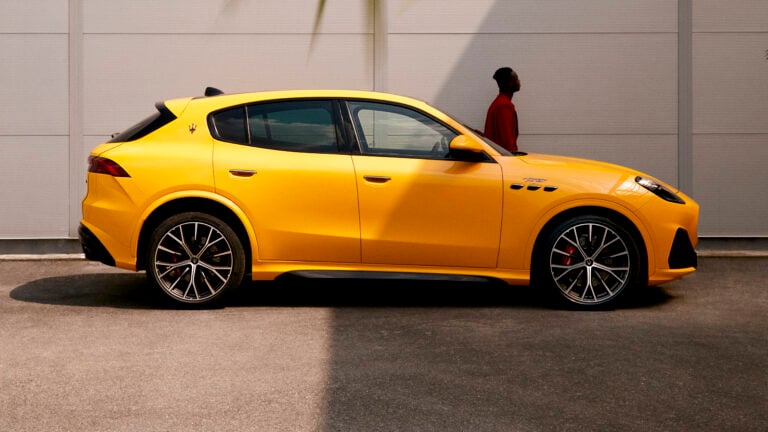 News
News2023 Maserati Grecale Australian pricing and features revealed
Maserati Grecale range, pricing and options detailed ahead of crucial SUV launch
-
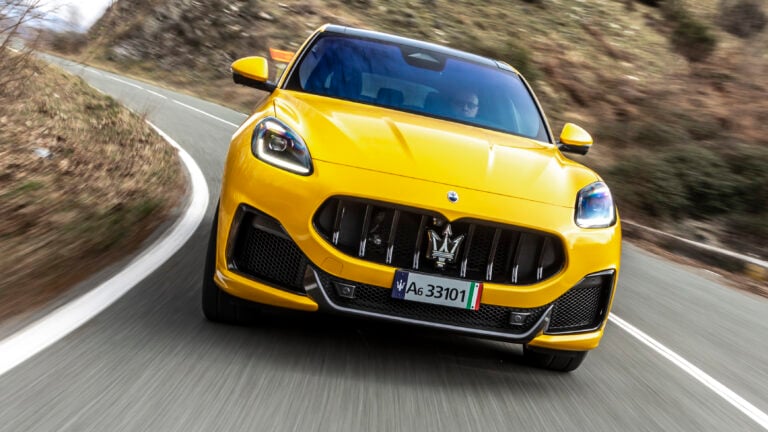 Reviews
Reviews2023 Maserati Grecale review: International first drive
The Grecale SUV stands to become Maserati's best-selling car by a big margin – but can it live up to the brand's promise?
-
 News
NewsNew car calendar 2026: All the new cars coming to Australia next year
Here’s the WhichCar by Wheels guide to all the new cars that will launch in Australia in 2026. Check back in regularly for updates...






